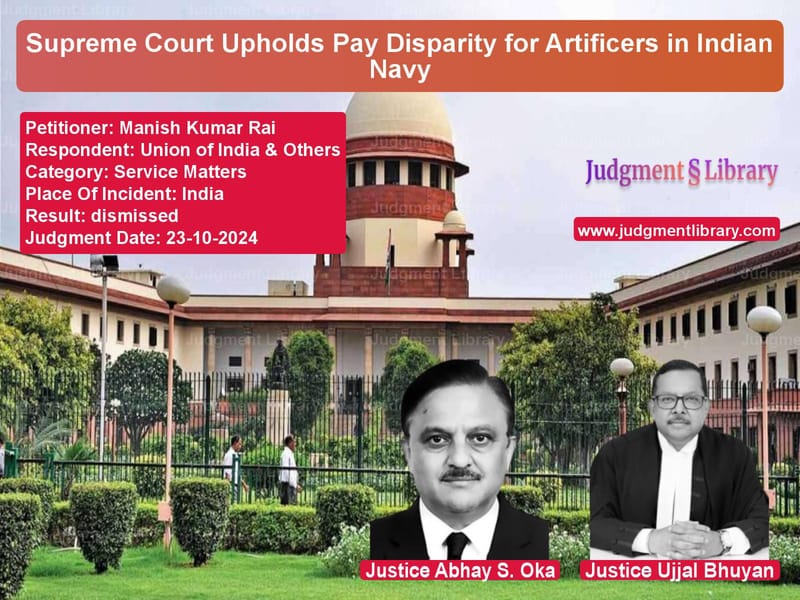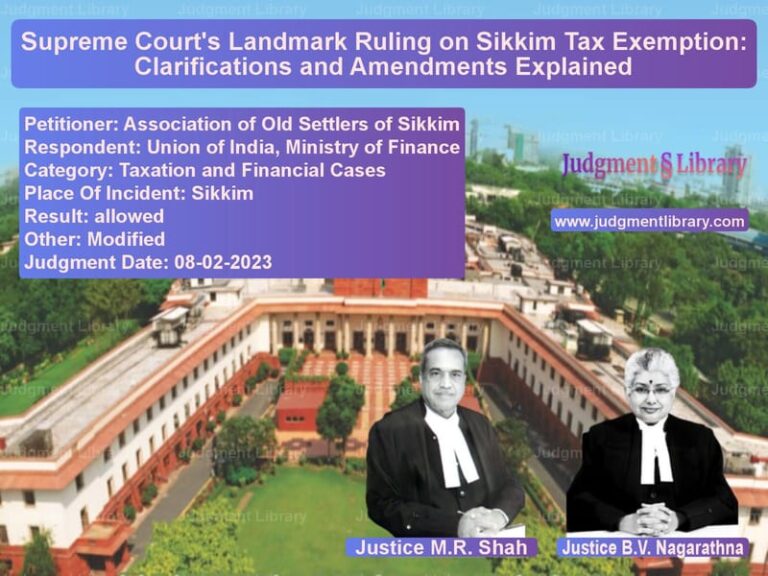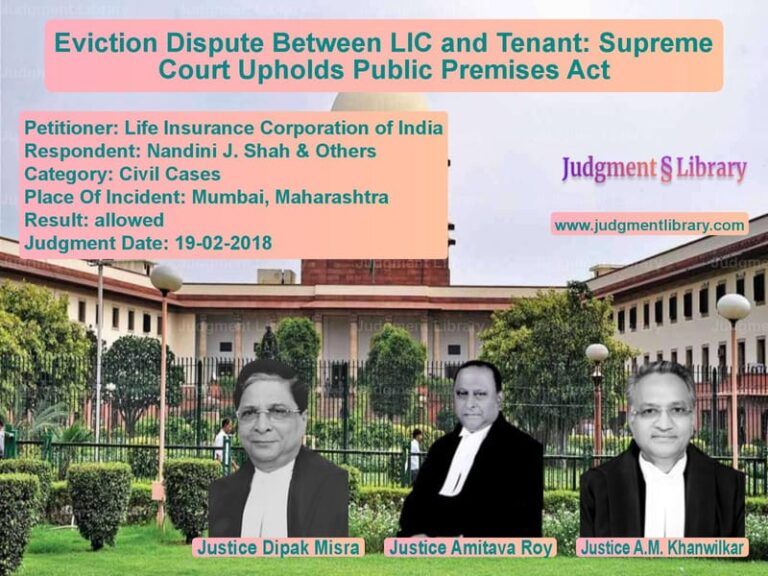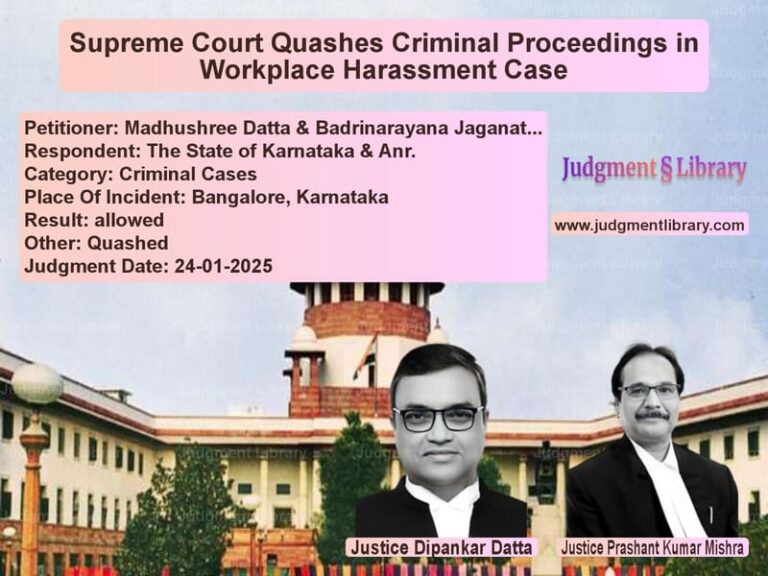Supreme Court Upholds Pay Disparity for Artificers in Indian Navy
The Supreme Court of India, in its recent judgment in Manish Kumar Rai vs. Union of India & Others, addressed a long-standing dispute over pay disparity in the Indian Navy. The case revolved around the claim that Artificers in ranks III, II, and I were unfairly denied the grade pay of Rs. 4200, which was granted to Chief Petty Officers in the non-technical branch. The Court upheld the decision of the Armed Forces Tribunal, dismissing the appeal and affirming the government’s pay structure for Artificers.
Background of the Case
The appellant, Manish Kumar Rai, served as an Artificer III in the Indian Navy. The issue originated from the implementation of the 6th Central Pay Commission (CPC) recommendations in 2008, which led to changes in the pay structure for armed forces personnel. The Government of India issued a Gazette Notification on August 30, 2008, retrospectively implementing the new pay structure from January 1, 2006.
The appellant argued that under the revised structure, all personnel with an S-9 pay scale were placed in Pay Band-2 with a Grade Pay of Rs. 4200. However, Artificers in ranks III, II, and I, despite being in the same pay band, were granted only Rs. 3400 as grade pay, leading to a dispute over pay parity.
Chronology of Legal Proceedings
- January 27, 2009: The Bombay High Court directed the government to review the appellant’s grievance.
- April 20, 2009: The Naval Headquarters rejected the appellant’s representation.
- The appellant challenged the decision through a writ petition before the Bombay High Court, which was later transferred to the Armed Forces Tribunal.
- October 27, 2010: The Tribunal dismissed the appellant’s claim.
- February 2, 2011: A review petition was also rejected.
- October 23, 2024: The Supreme Court upheld the Tribunal’s decision and dismissed the appeal.
Petitioner’s Arguments
The appellant contended that:
- The relative rank of Artificers III, II, and I is equivalent to Chief Petty Officers (CPOs) in non-technical branches.
- As per Navy Instructions No. 2/S/96 and a clarification issued by the Chief of Naval Staff in 1977, Artificers of Class III and above are considered equivalent to CPOs.
- Despite this equivalency, Artificers were granted lower grade pay than CPOs, which is discriminatory.
- The government had no justification for granting Rs. 4200 to Chief Petty Officers while denying the same to Artificers in equivalent ranks.
Respondent’s Arguments
The Union of India and the Naval Headquarters argued:
- Artificers of Class III, II, and I are not directly equivalent to Chief Petty Officers.
- The rank of Chief Artificer is the first level that can be considered equivalent to a CPO.
- Artificers of Class III to I cannot be promoted directly to Master Chief Artificers, unlike Chief Petty Officers, who have a clear promotional path.
- The grade pay structure reflects operational roles and responsibilities, and Artificers were already given a higher grade pay than Petty Officers but lower than Chief Artificers.
Supreme Court’s Observations
1. Equivalency in Rank Does Not Guarantee Equal Pay
The Court noted that while Artificers III, II, and I may hold relative ranks equivalent to Chief Petty Officers, their pay structure must be determined based on functional requirements.
“Though for the purposes of seniority, Artificers in Grade III may be Chief Petty Officers, they cannot seek promotion directly to the post of Master Chief Artificers.”
2. Command Structure in the Indian Navy
The Court examined Regulation 247 of the Indian Navy and concluded that Chief Artificers exercise command over Artificers in grades III, II, and I.
“The Chief Artificer has command over Artificers of III, II and I grade. This distinction justifies the differential grade pay.”
3. Justification for Different Grade Pay
The Court upheld the government’s rationale for the pay structure:
- Chief Petty Officers and Chief Artificers are granted the same grade pay of Rs. 4200.
- Artificers of III, II, and I are placed in an intermediate category, receiving Rs. 3400 as grade pay.
- This structure ensures that promotional avenues remain distinct and aligned with responsibilities.
“The grade pay of Artificers III to I is placed between the grade pay of Artificer IV and Chief Artificer. There is no illegality in this classification.”
Final Judgment
The Supreme Court ruled:
- The appeal was dismissed.
- The Tribunal’s decision was upheld, affirming the existing pay structure.
- The government’s rationale for different grade pay between Artificers and Chief Petty Officers was found to be legitimate and non-discriminatory.
Conclusion
The Supreme Court’s ruling in Manish Kumar Rai vs. Union of India reinforces key principles:
- Pay structures in the armed forces are based on rank, command responsibilities, and promotional pathways.
- Relative rank equivalency does not automatically translate to equal pay.
- Decisions on grade pay must be justified by operational requirements rather than pure rank comparison.
This decision serves as an important precedent in ensuring that armed forces personnel receive fair and justified pay scales based on their roles and responsibilities.
Petitioner Name: Manish Kumar Rai.Respondent Name: Union of India & Others.Judgment By: Justice Abhay S. Oka, Justice Ujjal Bhuyan.Place Of Incident: India.Judgment Date: 23-10-2024.
Don’t miss out on the full details! Download the complete judgment in PDF format below and gain valuable insights instantly!
Download Judgment: manish-kumar-rai-vs-union-of-india-&-oth-supreme-court-of-india-judgment-dated-23-10-2024.pdf
Directly Download Judgment: Directly download this Judgment
See all petitions in Employment Disputes
See all petitions in Public Sector Employees
See all petitions in Promotion Cases
See all petitions in Pension and Gratuity
See all petitions in Judgment by Abhay S. Oka
See all petitions in Judgment by Ujjal Bhuyan
See all petitions in dismissed
See all petitions in supreme court of India judgments October 2024
See all petitions in 2024 judgments
See all posts in Service Matters Category
See all allowed petitions in Service Matters Category
See all Dismissed petitions in Service Matters Category
See all partially allowed petitions in Service Matters Category







